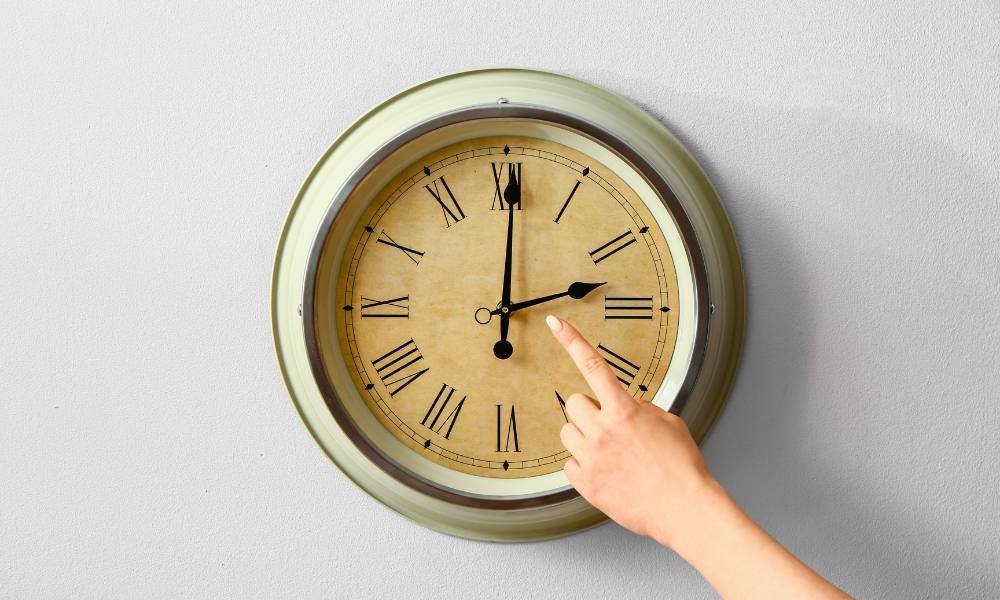Are your clock hands stuck, leaving you guessing the time? Learn how to fix clock hands not moving with our expert guide. Whether it’s a treasured heirloom or a modern wall clock, this common issue can be frustrating. In this article, we’ll walk you through identifying the problem, gathering the necessary tools, and performing straightforward fixes to get your watch ticking again. With clear, step-by-step instructions, you’ll restore your clock’s functionality in no time. Don’t let a malfunctioning watch disrupt your schedule—follow our tips and ensure your timepiece stays accurate. Dive in and discover the secrets to fixing clock hands that refuse to move.
How to Fix Clock Hands Not Moving: A Comprehensive Guide
- Identify the issue. Check if the problem is due to battery failure, dust, or mechanical issues.
- Gather Tools: Use a screwdriver, tweezers, magnifying glass, and cleaning supplies for the repair.
- Inspect Hands: Ensure clock hands are not loose, bent, or touching each other.
- Clean and Lubricate: Regularly clean the movement mechanism and lubricate moving parts.
- Test and Maintain: After fixing, test the clock for accuracy and perform routine maintenance to prevent future issues.
Identify the Problem

Identifying the problem is the first step in fixing clock hands that are not moving. Begin by checking if the watch is wound properly or if it needs fresh batteries. Next, inspect the clock mechanism for any visible obstructions or damage that might be hindering movement. It’s crucial to differentiate between mechanical and quartz watch issues, as the solutions will vary.
For mechanical clocks, look for worn gears or misaligned components. For quartz clocks, ensure the battery contacts are clean and the movement is functioning correctly. By pinpointing the exact issue, you can proceed with the appropriate fix to get your watch back in working order.
Tools and Materials Needed
To fix the clock hands not moving, you’ll need the right tools and materials. Essential tools include a small screwdriver, tweezers, and a magnifying glass. For cleaning, have a soft cloth, compressed air, and rubbing alcohol on hand.
Safety is crucial: work in a well-lit area, keep small parts organized, and handle delicate components with care. Ensuring you have these tools and materials ready will make the repair process smoother and more efficient, helping you restore your clock’s functionality quickly and safely.
Opening the Clock Case
To fix the clock hands not moving, start by safely opening the clock case. Use a screwdriver to carefully remove screws, ensuring you don’t damage the delicate components. Gently lift the case, paying close attention to avoid dislodging internal parts. Place screws and small parts in a labeled container to prevent loss.
Handle each component with care, using tweezers for precision. This meticulous approach will help you access the clock’s mechanism without causing further issues. Remember, patience and careful handling are key to successfully opening and repairing your watch.
Inspecting the Clock Hands
Inspecting the clock hands is a crucial step in fixing the clock hands not moving. First, check if the clock hands are loose or bent, as this can cause them to stick. Next, ensure the hands are not touching each other or the watch face, which can obstruct their movement.
If you find any misalignment, carefully realign the hands to ensure smooth operation. Properly aligned and adjusted watch hands are essential for accurate timekeeping, so take your time to inspect and fix any issues you find. Following these steps will help restore your clock’s functionality and keep it running smoothly.
Checking the Clock Movement

To fix the clock hands not moving, start by checking the clock movement. Understanding the watch movement and its components is essential. Open the watch case and carefully inspect the movement for common issues like dust, debris, or worn-out gear. Use a soft brush or compressed air to remove any dust and debris.
For lubrication, apply a small amount of clock oil to the gears and moving parts to ensure smooth operation. Regular maintenance, including cleaning and lubricating the watch movement, can prevent future issues and keep your clock running accurately. Following these steps will help restore your clock’s functionality and precision.
Fixing Mechanical Clock Hands
Fixing mechanical clock hands requires careful attention to detail. First, remove the clock face to access the hands. Gently adjust the hands, ensuring they are neither too tight nor too loose. If the hands are loose, tighten the center nut carefully. For broken hands, replace them with compatible ones.
Check for proper alignment and ensure the hands do not touch each other or the watch face. Balance is crucial; test the movement to confirm smooth operation. These steps will help restore the functionality of your mechanical clock, keeping it accurate and reliable.
Fixing Quartz Clock Hands
Fixing quartz clock hands can be straightforward. Start by diagnosing quartz clock movement issues; check for loose connections, battery life, or visible damage. Next, reset and reassemble the watch hands by carefully aligning them and ensuring they are not touching each other or the clock face. If the hands still don’t move, it might be time to replace the quartz movement.
Purchase a compatible movement mechanism, follow the manufacturer’s instructions for installation, and reassemble the watch. With these steps, you can restore your clock’s functionality, ensuring it keeps accurate time and enhancing its longevity.
Reassembling the Clock

Reassembling the clock after fixing the hands is crucial to ensuring it functions properly. Begin by ensuring all components are in place before closing the case. Carefully double-check the alignment of the watch hands to avoid any obstruction.
Once everything is correctly positioned, safely secure the clock case, ensuring it is tightly closed to protect the internal mechanisms. Proper reassembly not only restores the clock’s functionality but also extends its lifespan. Follow these steps diligently to keep your watch ticking accurately and reliably.
Testing and Maintenance Tips
Once you’ve fixed your clock hands, it’s crucial to test the clock to ensure they move correctly. Set the time and observe for a few hours to verify accuracy. Routine maintenance is key to preventing future issues. Regularly clean the watch face and hands, and check for dust in the movement mechanism. Lubricate moving parts annually to keep them running smoothly.
Additionally, ensure the clock is on a stable surface away from extreme temperatures and humidity. By following these simple maintenance tips, you can keep your watch in excellent working condition and enjoy its accurate timekeeping for years to come.
FAQs for “How to Fix Clock Hands Not Moving?”
1. What causes clock hands to stop moving?
💥Common causes include dead batteries, dust or debris, loose or misaligned hands, and mechanical issues.
2. How do I know if the battery or mechanism is the issue?
💥Replace the battery first. If the hands still don’t move, inspect the clock mechanism.
3. What tools do I need for fixing clock hands?
💥Essential tools are a screwdriver, tweezers, magnifying glass, a soft cloth, and compressed air.
4. Can I fix bent or misaligned clock hands?
💥Yes, straighten bent hands with tweezers and ensure they are properly aligned and secured.
5. How often should I maintain my clock?
💥Perform annual maintenance, including cleaning and lubricating, and check for dust regularly.
Conclusion
In conclusion, understanding ‘’how to fix clock hands not moving’’ can save you time and money while preserving the functionality of your timepiece. By following the steps to identify the problem, using the right tools, and performing regular maintenance, you can ensure your watch remains accurate and reliable. Regular checks and proper care will prevent future issues, keeping your clock in optimal condition. Whether it’s a cherished antique or a modern design, these tips will help you enjoy your watch for years to come. Keep your timepiece ticking smoothly by mastering these essential clock repair techniques.
